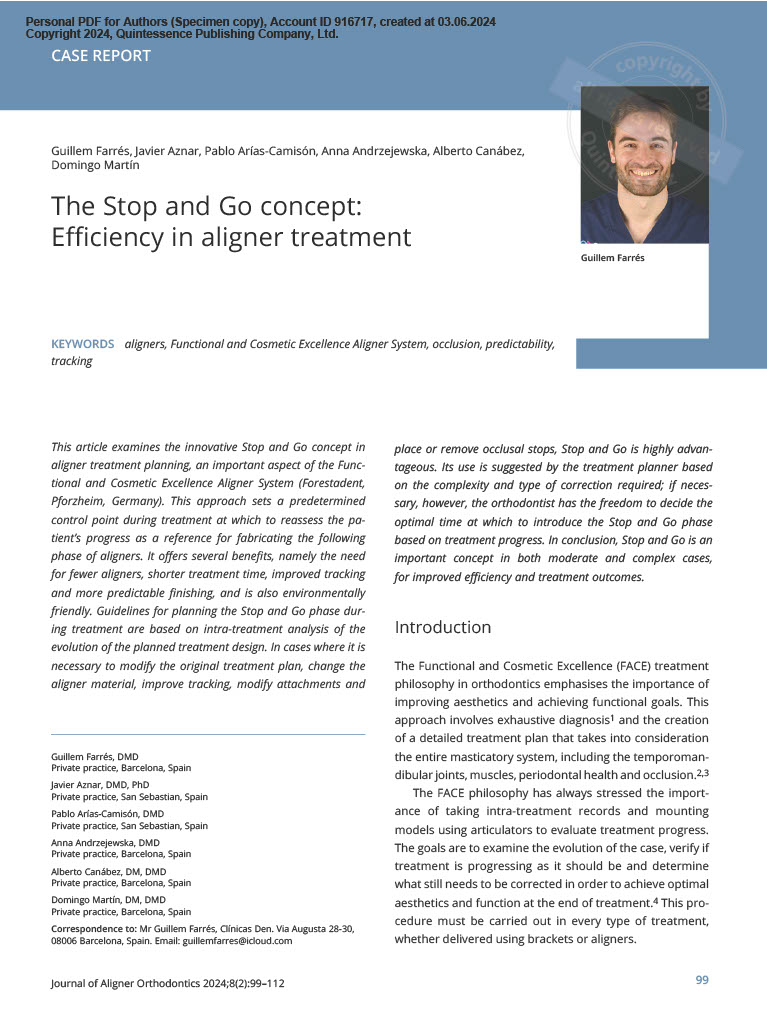Paper language: English

A novel three-dimensional morphological analysis of idiopathic bicondylar resorption following stabilization splint treatment
AUTHOR: Jialiang Zhou, Yujie Fu, Lixia Yu, Ziyu Li, Song Chen
English abstract
Bone modelling evaluation is important for monitoring idiopathic condylar resorption (ICR) progress. To compare condylar modelling in ICR patients treated with or without stabilisation splints (SSs). Eighty-four condyles from 84 ICR patients were studied: 42 received SS therapy (SS group); 42 received conventional therapy (control group). Cone-beam computed tomography images at diagnosis (T0) and after at least 6 months (T1) were used for three-dimensional reconstruction. Volume differences between T0 and T1 (δV) were used to evaluate the amount of modelling. Percentage of growth area (PCT) was used to assess the condylar surface growth tendency. No significant change in condylar volume was found in the SS group, whereas that in the control group was significantly decreased at T1 (P <.0001). The amount of modelling differed among condylar subregions within the SS group: among 6 subregions (P =.0137), between anterior and posterior regions (P =.0336) and between lateral, intermediate and medial regions (P =.0275). Control group condylar subregions showed no significant differences in the amount of modelling. The anabolic modelling tendency of the total condylar surface in the SS group was greater than that in the control group (P =.0251); however, there were no statistical differences in PCTs among condylar subregions in either group. SS therapy effectively reduced further bone destruction and promoted condylar modelling. Three-dimensional morphological analysis is a novel method that can accurately evaluate the amount of bone modelling and growth tendency in ICR patients.Download paper (PDF)
Access our most valuable content free of charge.
Related Scientific papers
1st FACE online symposium
The world is changing and in FACE, following tradition, we wont be left behind.
As we all know, we can’t travel or meet, so once again, we will take advantage of technology to turn the situation around.
«Work hard, play hard«
Two days full of experiences, thanks to the participation of 20 different clinics.
We’ll see you on February 26 and 27





